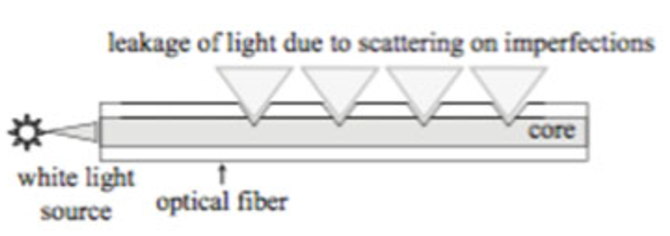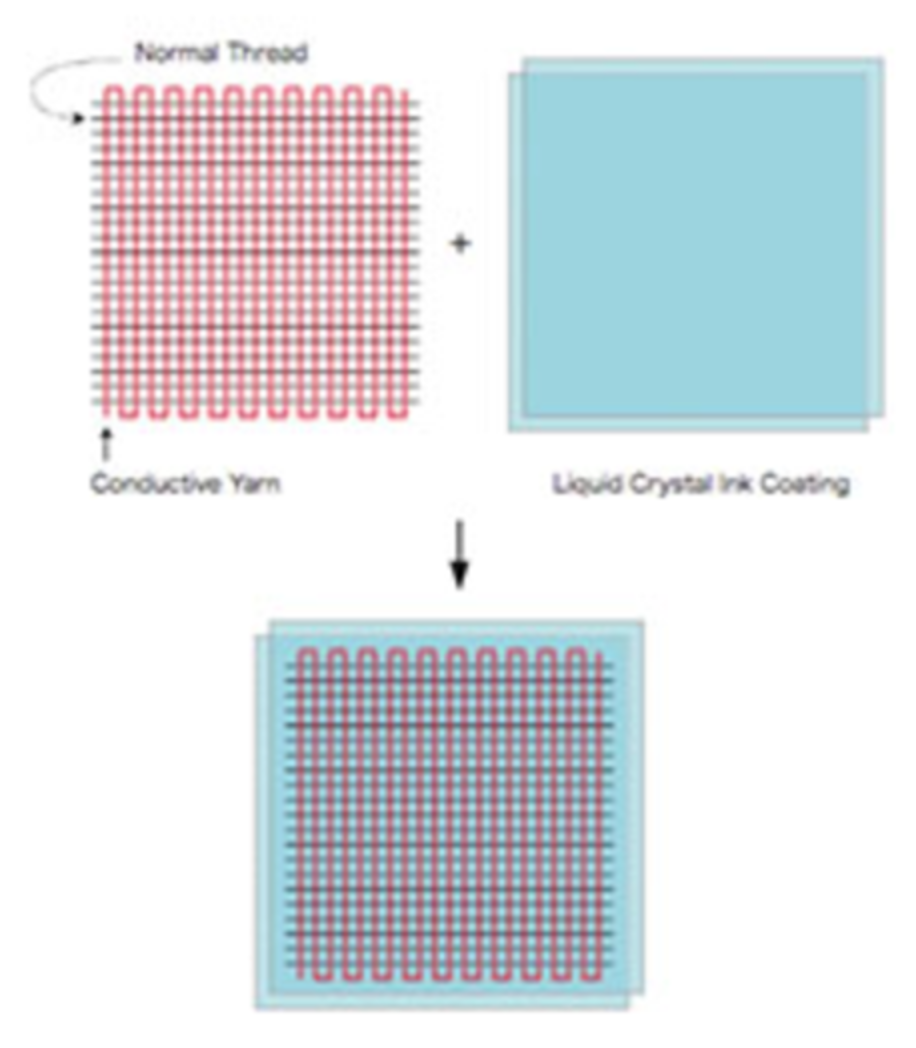By Rachel Skudlarek
Published January 17, 2017
With the rising concern about global warming and our environment, pressure has been put on all types of industries to clean up their act. One of the most wasteful and environmentally impactful industries is the fashion industry. A lot of pressure has been put on the fashion industry to find less wasteful ways of producing clothing and also to figure out ways to make fashion more sustainable. One of those ways is the invention of color changing fabrics. In the following paragraphs, we will explore color changing fabrics by defining what they are exactly, by talking about how color changing fabrics can have a positive impact on the environment, and what the future of color changing fabric looks like.
What Exactly is Color Changing Fabric?
Color changing fabric is a textile composed of a basic woven material that has either been integrated with fibers that emit light or process light to change the color of the fabric or the fabric has been treated with some form of liquid crystal ink. With the application of either process, the fabric is able to temporarily change of color to suit whatever the wearer needs and therefore, increase the functionality of the garment.
How Does Color Changing Fabric Work?
Color changing technology in fabric can vastly vary based on the process used. In the following paragraphs, this paper will discuss three main ways to implement the color changing process into fabrics; Photonic Crystal Fibers, Liquid Crystal Ink, and Fabcell.
Photonic Crystal Fibers

Figure 1. Photonic crystal fibers.
If you were to look a Photonic Crystal Fiber’s cross section, you would see that this fiber contains either very very small air voids (See figure 1) that are spaced periodically, or a sequence of layer of different materials. Because the fibers are transparent, when illuminated, the fibers seem to be colored due to an optical displacement of light from the center of the fiber. If the size or position of the structural elements in the center of the fiber are changed, the appearance changes in vast number of ways. Because no dyes are used, this fiber is completely colorfast and that means that the garment will never fade, therefore extending the life. If there is an external stimulant, such as an electrical surge, the refraction index, or the center of the fiber’s structure, will change temporarily. This temporary change will cause the refraction of the light to differ and therefore the color will change. (Gauvrea, Guo, Schicker, Stoeffler, Boismenu, Ajji, Wingfield, Dubois, Skorobogatiy, p. 4-5)
Liquid Crystal Ink
Liquid crystal ink is a type of ink that is coated over the fabric and will change color with the change of temperature. Because our body heat affects the liquid crystal ink and will change the color even if we do not want it to, the liquid crystal ink is not effective to be used on its own. (Wakita, Shibutani, p. 4)
Fabcell

Figure 2. Fabcell with liquid crystal ink.
Fabcell is the combination of two processes. The first process is a woven textile that contains a normal thread such as polyester or cotton and a conductive yard. The second process is using Liquid Crystal Ink. First, the fabric is woven with the two different yarns, then it is coated with the Liquid Crystal Ink (See Figure 2). Because there is a conductive yarn in the textile, the temperature can be controlled to create the change in the color of the Liquid Crystal Ink. (Wakita, Shibutan,i p.3)
Why is Color Changing Fabric Important?
When first hearing about color changing textiles, it might not sound like that big of a deal. So what, your fabric can change color? However, the Fashion industry is notorious for its wasteful habits and one of the biggest wastes is fast fashion and its disposable nature. Fashion works on a trend cycle. IN the past, it has moved very quickly and the items that were in style changed from season to season. According to fashion trend researcher Evelyn L. Brannon, the fashion cycle has slowed down in the recent years due to consumers being more aware of their buying habits impacting the environment. Luckily consumers and environmentalists alike are pushing back and calling for more sustainable practices.
Color Changing Fabric and the Environment
Color changing fabric can have a huge positive impact on the environment by cutting back on wasteful practices. One of those very wasteful practices is fast fashion. Fast fashion encourages people to cycle through their clothing quickly and focuses on what is trendy and now. The practice of fast fashion began in the 1960s and has continued well into the 2010s (Brannon, p. 264). However, as the public conscience has developed and opened up to environmental issues, fast fashion has slowed way down and a call to retreat back to classic looks has been made.
With the use of color changing fabrics, a person could purchase one basic tee shirt and they could change the color based on other garments they are wearing, therefore reducing the number of garments a person would need while still feeling like they were able to express themselves through their clothing choices. (Lebby, JachimoWicz p. 1) With the need for fewer garments and slower fashion, there would be less garbage produced by unwanted garments.
Color Changing Fabric and Fashion
Because of environmental impacts, there has been a demand for a slowing down of the fashion cycle and a trend toward classic looks that are more sustainable and less wasteful. With the use of color changing fabrics to make garments more multi-functional, it cuts down the need for an extensive wardrobe and with technologies like Photonic Crystal Fibers, garments can be made colorfast and this will increase the life of a garment (Brannon, p. 201-204).
Color Changing Fabric is equally important to fashion as it is to the environment. In this way, fashion and the environment can work side by side and together unlike any other time in history. Fashion has not paid much attention to the environment in the past, but with movements like going green, fashion can no longer ignore the impact it has on the environment.
The Future of Color Changing Fabric
Environmentalists and the fashion industry alike are extremely excited about color changing fabrics and the implications that color changing fabrics have toward the future of fashion. While most of these technologies are in the beginning stages, there are at least two products out there that have patents and are working toward becoming producible products in the very near future.
Mosaic Textile
Mosaic Textile is use of the Fabcell technology that was discussed earlier in this paper. Mosaic Textiles use the Fabcell technology by creating an entire garment out of the individual Fabcells. When used together to create one garment, the Fabcells work together to maintain the color of the garment that is being worn. At this point in the process, the creators are working toward making a device that will control the temperature of the conductive yarns so that the garment can be set at a certain color and will not be affected by the wearer’s body heat (Wakita, Shibutan,i p.3).
Fabric with Integrated Electrically Conductive Fibers
This product is in the patent stage and doesn’t actually have a catchy name yet, but the science behind it is fascinating. This product works much like the Fabcell, but it doesn’t use the Liquid Crystal Ink to get the color. Instead, it relies on conductive and optical fibers and electricity and stays away from heat being a factor for the color. With the use of optical fibers, the color would be controlled using electricity and would be emitted through the optical fiber. (Lebby, JachimoWicz. P. 4)
With the invention of Color Changing Fabrics, the doors to sustainable fashion have been open. I’ve listed just two of the vast array of products that are being tested and the excitement for the use of this technology is just beginning. With more successful products on the market, it will be very interesting to see if this invention takes off and is able to have a positive effect on both the environment and the fashion industry. No matter what, the fashion industry needs to make progress toward creating new and innovative ways to be more sustainable. Color changing fabric is a great place to start and has great promise.
Resources
Brannon, Evelyn. Fashion Forecasting, 4th ed. Fairchild Books, 2005.
Gauvreau, B. Guo, N. Schicker, K. Stoeffler, K. Boismenu, F. Ajji, A. Wingfield, R. Dubois, C. Skorobogatiy, M. “Color-changing and color-tunable photonic bandgap fiber textiles.” Optics Express, 2008, pp. 1 - 17.
Wakita, Akira. Shibutani, Midori. “Mosaic Textile: Wearable Ambient Display with Non-emissive Color-changing Modules.” Keio University, pp. 1 - 7.